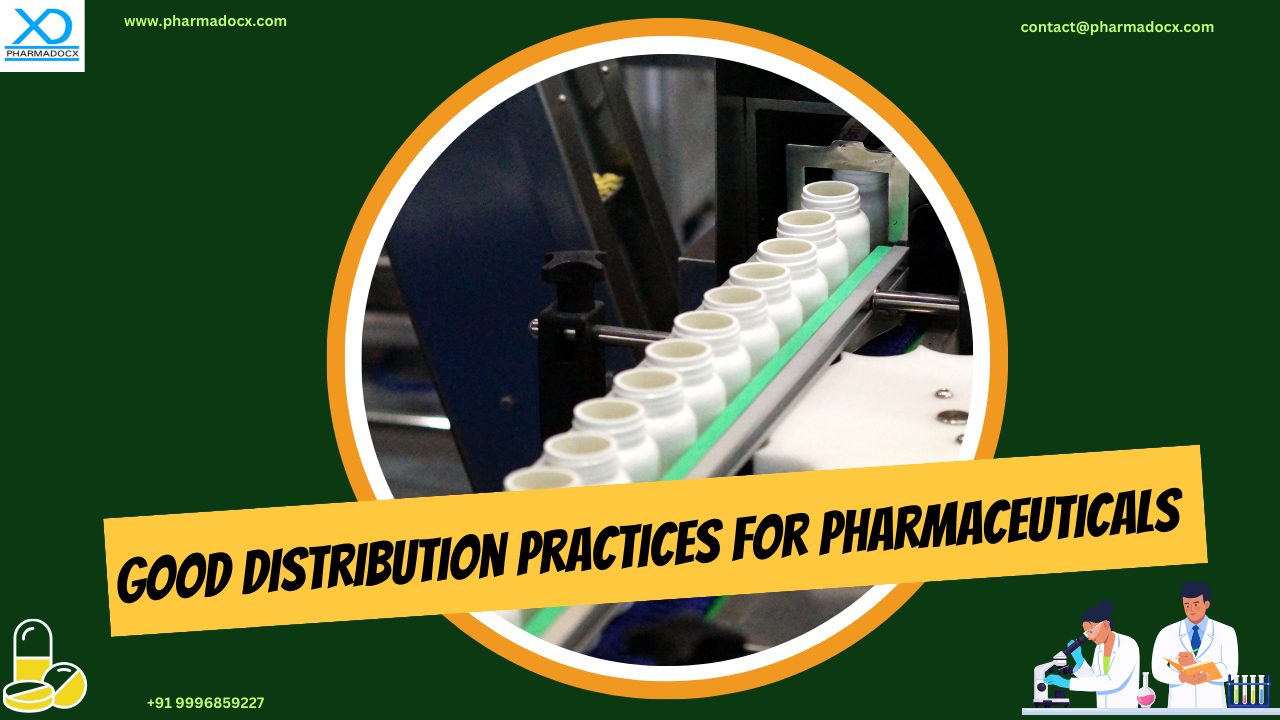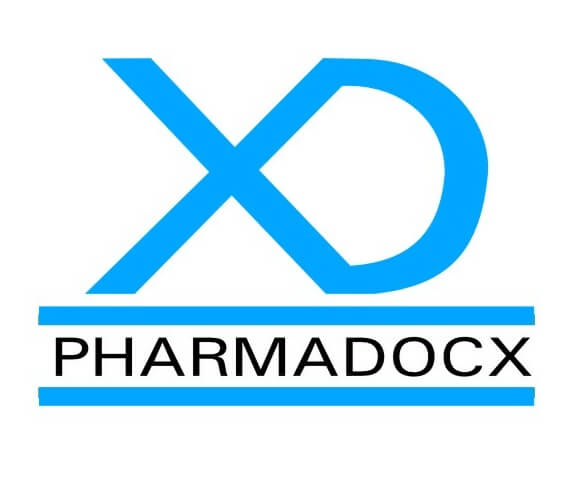Given the vital role of drugs in healthcare system, their quality and efficacy have to be regulated at every stage. Stringent guidelines are in place right from raw material procurement to the transportation of the finished product to the patients. Good distribution practices in pharmaceuticals are aimed at maintaining quality and efficacy of drugs while they are being distributed. These guidelines are for regulating and controlling the entire pharmaceutical distribution chain. Herein, we will present the need for good distribution practices for pharmaceuticals and an overview of the applicable CDSCO regulations.
Good distribution practices for pharmaceuticals
In pharma, good distribution practices regulate and control quality and efficacy of pharmaceuticals during all aspects of the distribution process. All aspects from procurement, purchase, storage, distribution, transportation to documentation and record-keeping are covered under these guidelines.
Good distribution practices for pharmaceuticals are not just applicable to the transportation of drugs from the manufacturers to the patients. They are applicable but not limited to the following:
- Distribution of pharmaceuticals
- Quality management system
- Organization and management
- Warehousing and storage temperature and environment
- Personnel
- Labelling
- Transportation
- Shipment containers
- Dispatch and receipt
- Documentation
- Complaints
- Recalls and returns
- Spurious pharmaceutical products
- Import
Guidelines for all these aspects will ensure the drug is shipped safely. The aim is the patient will receive intact properly packaged and labelled medicines, which will be effective and safe.
The need for good distribution practices in pharmaceuticals industry
The pharmaceutical manufacturing process is highly regulated with guidelines for every step to manufacture safe and effective drugs. However, if the drug is not transported and distributed in a manner the efficacy and quality of drugs remain intact, the whole purpose of these guidelines is defeated. Drug distribution plays a vital role in the supply-chain management of pharmaceuticals. Multiple individuals and entities are involved in handling, storage and distributing these pharmaceuticals. Similar to drug manufacturing, drug distribution can face risks of pathogen contamination, mix-ups, adulteration, and cross-contamination. All these risks will compromise the quality of drugs reaching the patients. Additionally, involvement of unauthorized parties in drug distribution and sale is another potential threat to the safety of pharma industry.
Hence, good distribution practice guidelines governing all aspects of distribution are necessary for patients to receive safe and effective drugs. To ensure the original quality of pharmaceuticals is maintained till they reach the patients, all aspects of drug distribution have to comply with the regulations. Good distribution practice guidelines are applicable for each activity and personnel involved in the distribution of pharmaceuticals.
Therefore, all aspects and personnel involved in manufacturing and distributing drugs are equally accountable for drug quality and efficacy. Joint initiative of all entities in the supply chain is required to prevent entry of spurious/sub-standard pharmaceuticals in the market. Good distribution practice or GDP provides distinct guidelines for entities involved in the drug supply chain. These guidelines and regulations will protect the patients from spurious/substandard pharmaceutical products. Thus, good distribution practices for pharmaceuticals have a vital role in promoting patient safety and protecting public health.

Which entities fall under the purview of good distribution practices for pharmaceuticals?
All entities from those involved in distribution of pharmaceuticals from manufacturers’ premises to selling them fall under GDP purview. Good distribution practice guidelines govern the following entities:
- Manufacturers of bulk and finished products who will package and label them for distribution
- Storage of finished products prior to shipment
- Wholesalers
- Suppliers
- Distributors
- Logistics providers
- Transport companies
- Government institutions
- Traders
- Person dispensing or providing pharmaceuticals to patients
- International procurement organizations
- Certifying bodies
5 tips for effectively implementing good distribution practices in pharma sector
We have provided some tips to effectively implement good distribution practices in pharma companies.
- Understand the applicable regulations: CDSCO has implemented the good distribution practices for pharmaceuticals in India. It is important to understand the applicable regulatory guidelines for distributing pharma products and designing your distribution model accordingly.
- Establish an effective quality monitoring systems: An effective safety and quality monitoring system is required to identify potential quality risks.
- Robust supply chain management: All pharmaceutical should be packaged, labelled, stored, and shipped per industry guidelines for safe manufacturing and distribution.
- Streamlined order processing system: A streamlined order processing system is easy to track, organised, and efficient.
- Effective communication: Effective communication within the company will help avoid back and forth. Effectively communicate to all entities in your distribution channel what regulatory guidelines they are expected to follow. Educating the entities about which GDP regulations will be applicable to them shall help them effectively implement the regulations in their activities.
CDSCO guidelines for good distribution practices
Central Drugs Standard Control Organization or CDSCO is the apex regulatory body for pharmaceuticals in India. In the 54th meeting of Drugs Consultative Committee held on 30.07.2018, CDSCO implemented the good distribution practices for pharmaceuticals. The Central Drugs Standard Control Organization has provided detailed guidelines and requirements for good distribution practices for pharmaceuticals in India.
As per CDSCO, all parties involved in distribution of pharmaceuticals will be responsible for drug quality and distribution chain integrity. The parties are those involved in the distribution process from the manufacturer’s site to the entity responsible for dispensing the drug. Furthermore, the GDP regulations will be applicable to both the forward chain (from manufacturer to dispensary) and backward chain (reverse process for product recall). Additionally, these regulations will be applicable to the donated pharmaceutical products as well. All entities, including government, customs, regulatory authorities, manufacturers, distributors, transporters, suppliers, drug storage facilities, and individuals dispensing drugs will be responsible. Thus, collaboration and joint effort of all the aforementioned entities will be required to protect patients from spurious pharmaceuticals.
CDSCO regulations for the distribution of pharmaceuticals in India
CDSCO has laid down certain regulations for distributing pharmaceuticals products in India.
- The distributor or the organization to which the distributor belongs to has to be authorized by the applicable legislation. Furthermore, the distributor entity will be accountable for all the activities it performs related to distribution of pharmaceuticals.
- Only authorized personnel or entities with appropriate licenses will be allowed to import or export pharmaceuticals
- The activities of parties involved in the distribution of pharmaceutical products will be regulated by national legislation.
- If the distributor’s activity is subcontracted to another entity, the entity has to be authorized to carry out that activity. Furthermore, the subcontracted entity is required to function at the same quality standard as the distributor was expected to function.
- Distributors/agents shall obtain their pharmaceutical product supplies only from entities authorized to supply them. Furthermore, distributors are required to supply pharmaceutical products only to authorized entities who are themselves distributors or retailors.
We have provided an overview of the CDSCO regulations for pharma product distribution. For detailed guidelines and expected roles of each party, contact us. We will be more than happy to help.
Good distribution practices in pharmaceutical industry: An essential regulation for patient safety
It is important to carefully choose distribution channels so that the pharmaceutical products can safely reach the intended users. Moreover, proper packaging, labelling, and storing of products can protect them from damage and ensure the original quality is retained. Hence, the distribution of pharmaceuticals is a complex and challenging process, with various quality and safety issues to consider. Thus, pharmaceutical companies must follow the guidelines and regulations mentioned in GDP to safely deliver their products to patients.
Good distribution practices for pharmaceuticals ensure patients receive safe and effective drugs. This is the ultimate goal of all pharmaceutical regulations: improvement of patient outcomes and safety through safe and effective drugs. Regulations for manufacturing and distributing pharmaceuticals can be confusing to decipher. Worry not! Pharmadocx Consultants provides a wide range of drug regulatory services. Simply drop an email at [email protected] or call/Whatsapp on 9996859227 to avail our drug regulatory services.





